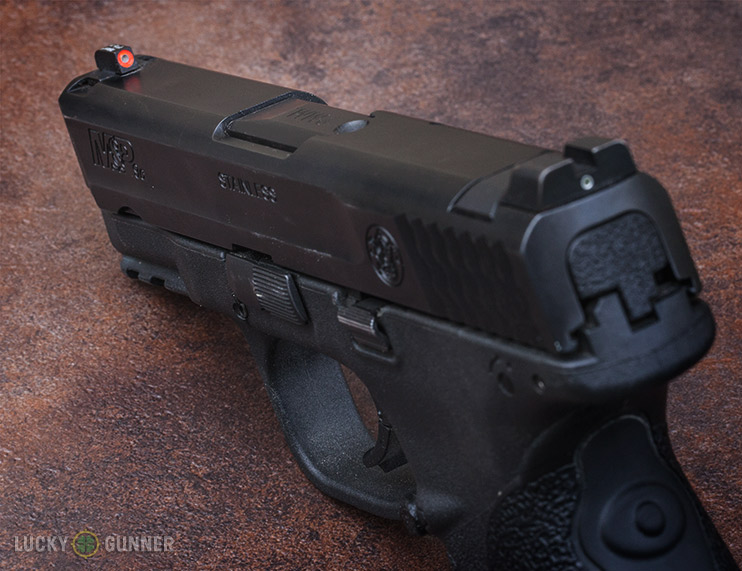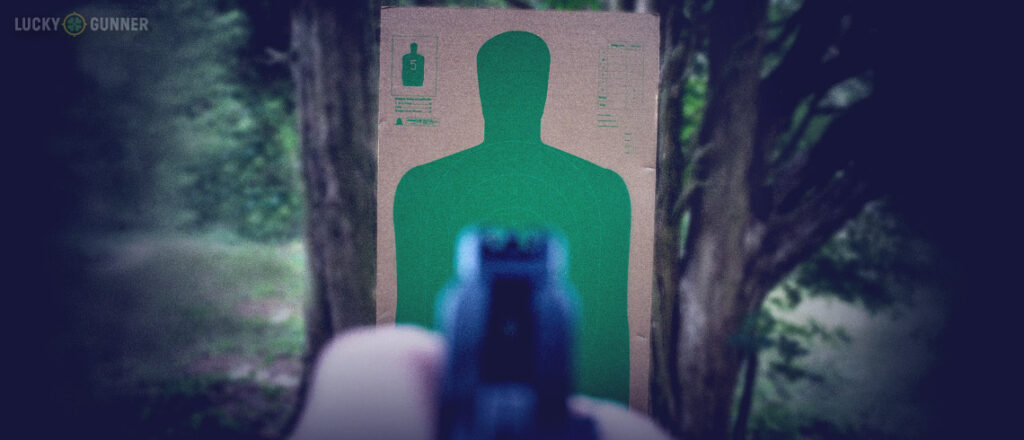If you’re looking for a new way to a start virtual bar fight, hop onto any shooting-related discussion forum and declare your opinion of point shooting. In the realm of self-defense handgun technique, few topics have the power to get the keyboard commandos riled up like this one.
There are several different shooting techniques that are often considered to be some form of point shooting; index shooting, target focus shooting, instinctive shooting, etc. The debate essentially comes down to whether it’s better to train the “traditional” way by maintaining a sharp focus on the front sight, or to focus on the target and rely on a more intuitive method for pointing the handgun.
Fortunately for you, I’m not taking a side in this fight. At least not today… mostly. Instead, I’d like to focus on an obnoxious little side-effect of this debate that I believe most experts on either side would have a problem with: the myth that point shooting is a substitute for practice or decent gear.
Not only is this idea false, it leads to a number of erroneous approaches to training, equipment selection, and self-defense mindset. Oftentimes, the roots of this way of thinking lie in the misconception that in a “real world” self-defense encounter, you can’t or won’t be able to use your sights. It’s true that some reports have suggested a large percentage of gunfight survivors can’t recall having looked at their sights during the encounter. Unfortunately, rather than viewing these reports as descriptive, a lot of people take them as prescriptive – a manual for how to survive a gunfight. So they neglect any serious training or don’t bother upgrading the sights on their carry gun and use these anecdotes as justification.

The “nobody uses their sights” myth is easy enough to counter. Probably the most well-known example to the contrary comes from the late Jim Cirillo of the NYPD who could distinctly recall seeing every groove and imperfection in the front sight of his revolver as he shot three armed robbers in the first of more than 17 gun fights he was involved in over the course of his career. If that tired old story isn’t enough evidence, then consider the research of Dave Spaulding, who has interviewed nearly 200 gun fight surivors including police officers, military members, and armed citizens. Being a firearms trainer himself, Spaulding of course asked whether they remembered using their sights. It turns out that individuals whose handguns were equipped with highly visible sights often did recall using them during the fight. So it turns out that sights that are easier to see at the range are also easier to see in a gun fight. Go figure.
But still the myth is repeated over and over; “you won’t use your sights in a gunfight”. This is a great example of confirmation bias — when you lean toward believing something because it confirms what you already think or practice. Consider the guy who just bought a tiny polymer pocket .380 for self defense only to discover that he can’t see the itty-bitty black sights and the recoil is too uncomfortable, so he never practices with it. When he reads that “most people don’t use their sights in the real world”, he’s thinking “Great! I can’t see my sights anyway. Forget practicing, I’ll just use ‘point shooting’ to get the job done.” Spaulding has another great observation on this line of thinking: “When statements are made such as, ‘I’m not going to be able to use the sights anyway, why spend training time using them?’ It is almost as if we are expecting to be caught unaware and allowing luck to be the deciding factor.”
But even most modern-day advocates of point shooting don’t advocate relying on luck. There’s a big difference between an experienced handgun shooter using a point shooting technique and an amateur who blindly fires down range because he’s too apathetic or stubborn to learn to use the sights properly at speed. There are expert musicians who use sheet music and equally great ones who only play by ear. Both of them had to work incredibly hard to hone their craft. You can make a case for either approach to learning music, but no one would take me seriously if I started banging on a piano keyboard and said “sheet music is for chumps” because I’m “playing by ear”. The end result isn’t music, it’s just annoying.
Some instructors will teach a form of intuitive or point shooting to beginners as a basic survival tool for extra-close point blank encounters. But I don’t know of any respected firearms trainer who would suggest that point shooting is a shortcut for practice. In fact, many of the names often associated with some form of point shooting have actually advocated for sighted fire under certain circumstances including Rex Applegate and Rob Pincus. As has been pointed out many times by others, the concept that handgun sights should never be used is an antiquated idea from the days when all handgun sights were nearly impossible to see even under ideal lighting conditions.
So before you decide to completely dismiss the possibility of using your sights in self defense, get a real understanding of the different schools of thought out there. Learn what point shooting advocates are actually teaching and take a look at the opposing viewpoints. If “point shooting” is just an excuse for not getting in more trigger time or to help you feel better about the sub-par pistol you carry, it’s not really point shooting. It’s laziness.

